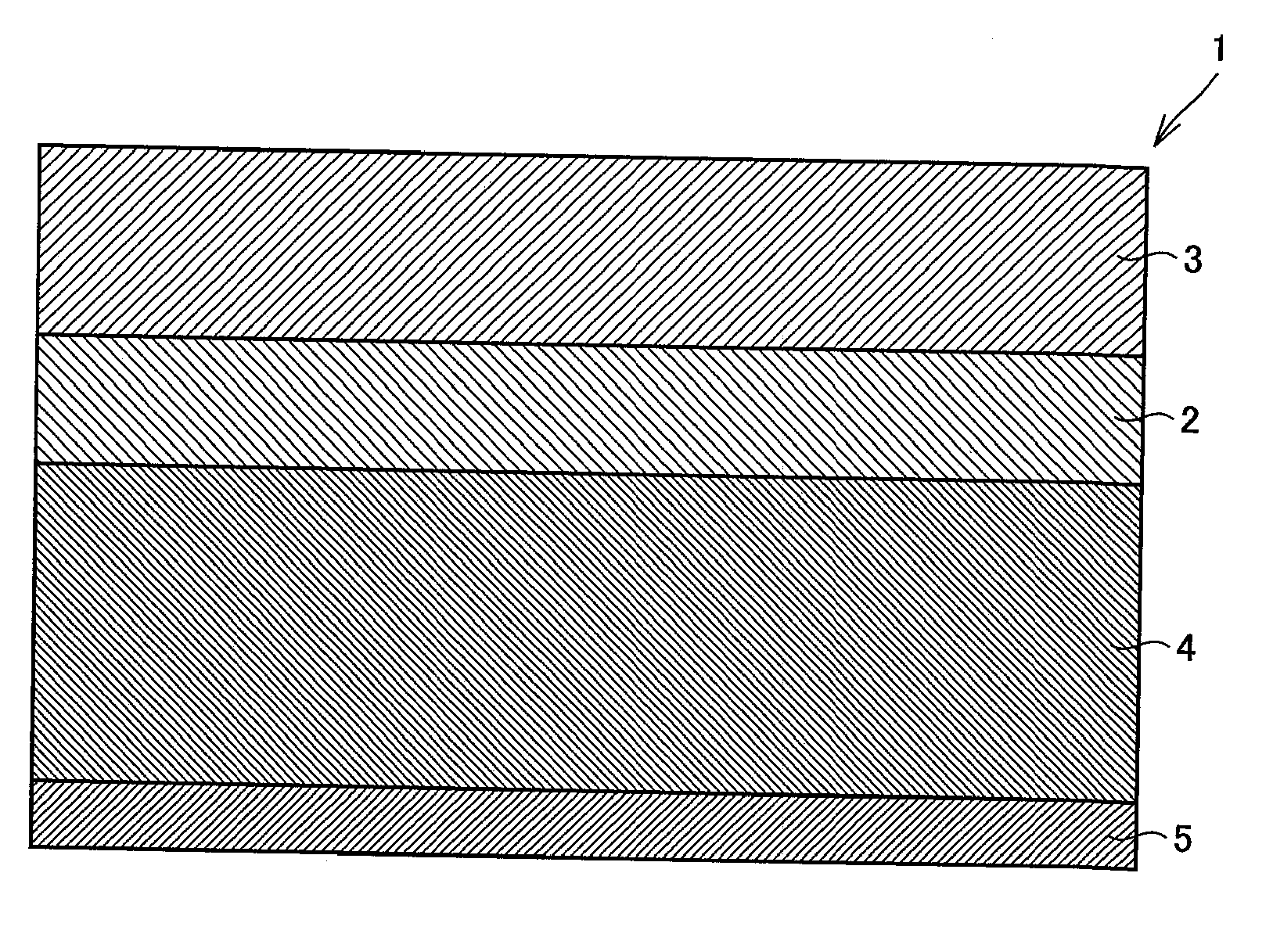Magnetic recording medium
a magnetic recording medium and magnetic technology, applied in the field of magnetic recording mediums, can solve the problems of deterioration of the electromagnetic transformation characteristics of the produced magnetic recording medium, dispersion of iron oxide particles, surface smoothness degradation, etc., and achieve the effect of good dispersibility and sufficient coating strength
- Summary
- Abstract
- Description
- Claims
- Application Information
AI Technical Summary
Benefits of technology
Problems solved by technology
Method used
Image
Examples
synthetic example 1
Synthesis (1) of polyester polyol (A)
[0105]A reactor equipped with a thermometer, a stirrer and a Liebig condenser was charged with 131 parts by weight of adipic acid, 30 parts by weight of dimethyl 5-sodiumsulfoisophthalate, 71 parts by weight of 1,6-hexanediol, 94 parts by weight of 2,2-dimethyl-1,3-propanediol and 0.2 part by weight of tetrabutyl titanate, and the mixture was heated at 180 to 220° C. for 180 minutes and subjected to an esterification reaction. Then, the pressure in the reaction system was reduced to 5 mm Hg over 20 minutes, while the temperature of the system was raised to 240° C. Furthermore, the pressure in the system was gradually decreased until the pressure was 0.3 mm Hg or less after 10 minutes. The mixture was subjected to a polymerization condensation reaction at 240° C. for 30 minutes. As to the resulting polyester polyol (called polyester polyol (a)), the resin composition (molar ratio), hydroxyl value and concentration of a metal sulfonate group are sh...
synthetic example 2
Synthesis (2) of polyester polyol (A)
[0106]A reactor equipped with a thermometer, a stirrer and a Liebig condenser was charged with 139 parts by weight of adipic acid, 15 parts by weight of dimethyl 5-sodiumsulfoisophthalate, 208 parts by weight of 2,2-dimethyl-1,3-propanediol and 0.2 part by weight of tetrabutyl titanate, and the mixture was heated at 180 to 220° C. for 180 minutes and subjected to an esterification reaction. Then, the pressure in the reaction system was reduced to 5 mm Hg for 5 minutes. As to the resulting polyester polyol (called polyester polyol (b)), the resin composition (molar ratio), hydroxyl value and concentration of a metal sulfonate group are shown in Table 1.
synthetic example 3
Synthesis (3) of polyester polyol (A)
[0107]A reactor equipped with a thermometer, a stirrer and a Liebig condenser was charged with 89 parts by weight of dimethyl 5-sodiumsulfoisophthalate, 208 parts by weight of 2,2-dimethyl-1,3-propanediol and 0.2 part by weight of tetrabutyl titanate, and the mixture was heated at 180 to 220° C. for 180 minutes and subjected to an esterification reaction. After the esterification reaction was finished, 102 parts by weight of adipic acid was further added to the reaction mixture, which was then heated at 180 to 220° C. for 60 minutes and subjected to an esterification reaction and then, the pressure in the reaction system was reduced to 5 mmHg for 5 minutes. As to the resulting polyester polyol (called polyester polyol (c)), the resin composition (molar ratio), hydroxyl value and concentration of a metal sulfonate group are shown in Table
PUM
| Property | Measurement | Unit |
|---|---|---|
| length | aaaaa | aaaaa |
| mol % | aaaaa | aaaaa |
| thickness | aaaaa | aaaaa |
Abstract
Description
Claims
Application Information
 Login to View More
Login to View More - R&D
- Intellectual Property
- Life Sciences
- Materials
- Tech Scout
- Unparalleled Data Quality
- Higher Quality Content
- 60% Fewer Hallucinations
Browse by: Latest US Patents, China's latest patents, Technical Efficacy Thesaurus, Application Domain, Technology Topic, Popular Technical Reports.
© 2025 PatSnap. All rights reserved.Legal|Privacy policy|Modern Slavery Act Transparency Statement|Sitemap|About US| Contact US: help@patsnap.com



